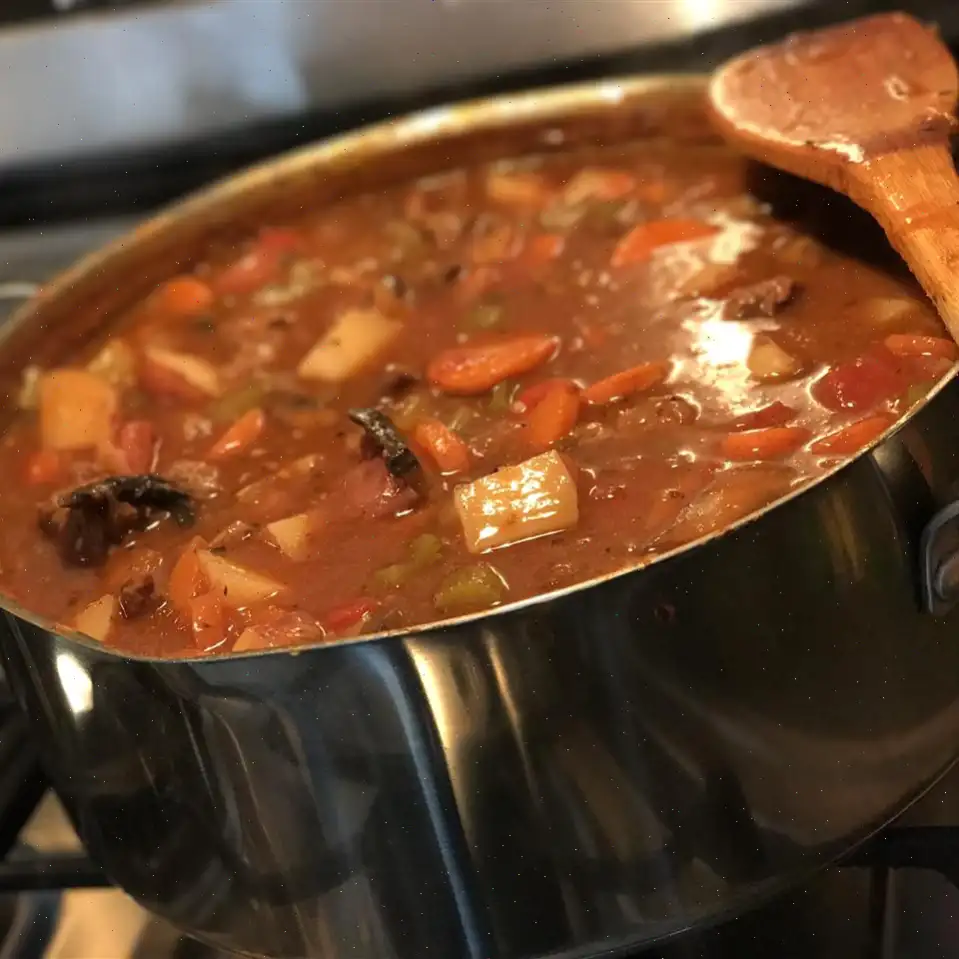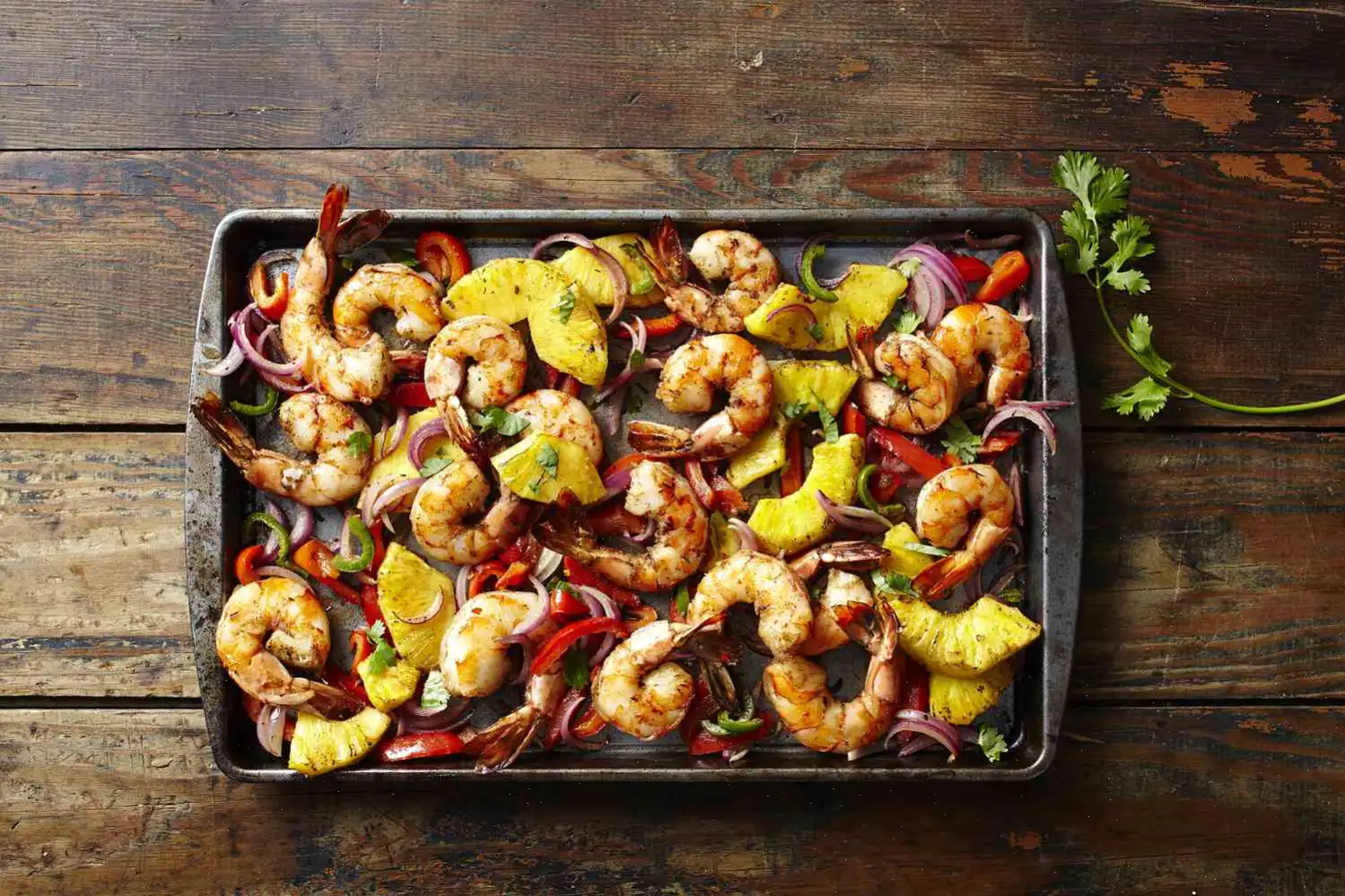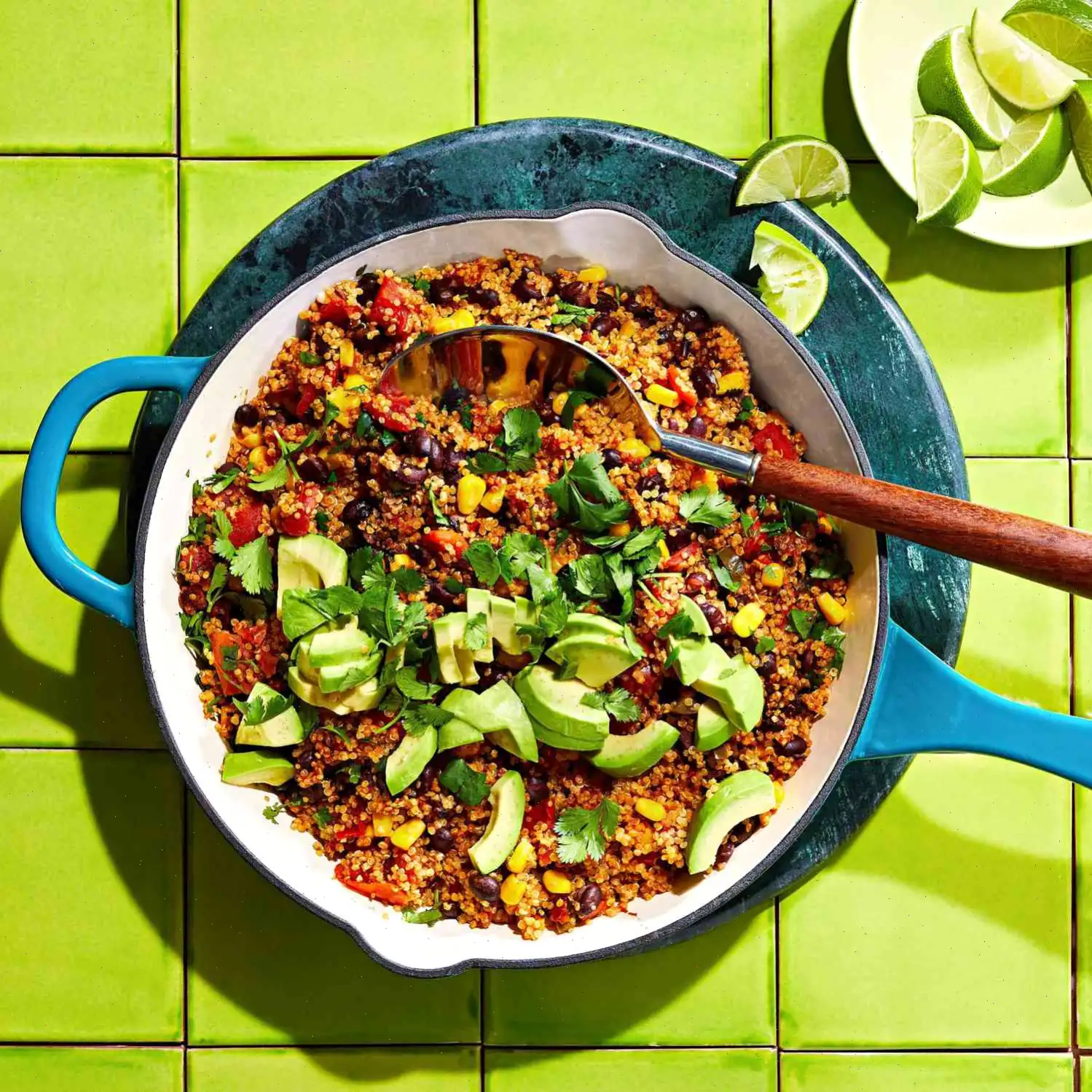
Apple Cider Beef Stew Recipe
Beef Stew with Apple Cider
This hearty beef stew, flavored with apple cider and fresh vegetables, will warm you up on a cold day. Packed with tender beef, savory seasonings, and a subtle sweetness from the apple cider, it's a comforting dish that's perfect for family meals.
Ingredients
- 3 tablespoons all-purpose flour
- 2 teaspoons salt
- 1 teaspoon ground black pepper
- teaspoon dried thyme
- 2 pounds cubed beef stew meat
- 3 tablespoons olive oil
- 2 cups apple cider
- cup water
- cup apple cider vinegar
- 1 large bay leaf
- 4 carrots, sliced
- 3 potatoes, cubed
- 2 onions, diced
- 2 celery stalks, chopped
- 1 large McIntosh apple, sliced
Directions
- In a bowl, combine the flour, salt, pepper, and thyme.
- Toss the beef cubes in the flour mixture, ensuring they are evenly coated.
- Heat olive oil in a Dutch oven or large pot over medium-high heat.
- Working in batches, brown the beef cubes on all sides, then transfer them to a plate.
- Once all the beef is browned, return it to the pot and add the apple cider, water, and cider vinegar. Stir to combine.
- Bring the mixture to a boil, then add the bay leaf. Reduce the heat to low and let it simmer, partially covered, for 1 hour.
- After 1 hour, add the carrots, potatoes, onions, celery, and apple slices to the pot. Stir gently to mix.
- Continue to simmer, uncovered, for another 1 hour or until the vegetables are tender.
- Once the stew is ready, remove the bay leaf and discard it. Serve hot and enjoy!
Nutrition Facts (per serving)
| Calories | 526 |
|---|---|
| Total Fat | 22g |
| Saturated Fat | 7g |
| Cholesterol | 81mg |
| Sodium | 891mg |
| Total Carbohydrates | 52g |
| Dietary Fiber | 6g |
| Total Sugars | 21g |
| Protein | 30g |
| Vitamin C | 31mg |
| Calcium | 64mg |
| Iron | 4mg |
| Potassium | 1047mg |
* Percent Daily Values are based on a 2,000 calorie diet. Your daily values may be higher or lower depending on your calorie needs.
** Nutrient information is based on available data. Please consult your doctor or registered dietitian if you have any dietary restrictions.

History and Origins
The origins of Apple Cider Beef Stew are rooted in the rich culinary traditions of the United States, particularly in the Northeast where apple cider is a common ingredient. The dish combines hearty beef stew with the sweet-tart flavor of apple cider, which has been a staple in American kitchens since the 17th century. Cider was historically used for preserving apples, and its versatility in cooking soon made it a popular choice for stews and braises, bringing a distinct sweetness and depth to savory dishes. Apple Cider Beef Stew is a perfect example of how traditional ingredients are transformed into something comforting and rich.
Regional Variations
In regions such as New England and the Midwest, apple cider is a popular addition to many fall dishes, as it pairs beautifully with seasonal vegetables like carrots and potatoes. These areas, known for apple orchards and the harvest season, often incorporate cider into their stews to enhance the natural sweetness of the produce. In contrast, the Southern United States tends to favor more savory or spicy beef stews, using ingredients like okra or hot sauce. Thus, Apple Cider Beef Stew stands out with its unique balance of sweet, tart, and savory flavors, setting it apart from more traditional, heavily spiced Southern recipes.
How It Differs from Similar Dishes
Unlike classic beef stew, which typically relies on beef broth or stock as the base, Apple Cider Beef Stew uses apple cider and apple cider vinegar, which add a unique layer of sweetness and acidity. This variation gives the stew a lighter, more refreshing taste compared to the rich, hearty flavors found in traditional beef stew recipes. The addition of fresh apple slices also introduces a tender texture that contrasts with the vegetables, making this dish feel more balanced. The apple cider vinegar, in particular, offers a sharpness that counteracts the sweetness, making it a delightful and unexpected twist on a classic dish.
Where It's Typically Served
Apple Cider Beef Stew is a popular dish in home kitchens during the colder months, especially in regions where apple cider is a local product. It is commonly served in family gatherings, potlucks, and holiday dinners. The stew's robust flavors make it a perfect choice for a cozy winter meal, often accompanied by crusty bread or biscuits to soak up the delicious broth. While it may not be found in every restaurant, some farm-to-table or seasonal eateries in the Northeast and Midwest may feature this dish during the fall and winter months, highlighting the use of local ingredients such as apples and cider.
Interesting Facts
- Apple cider is a byproduct of the apple juice-making process and has been a part of American culinary history for centuries.
- The McIntosh apple, often used in this stew, was first discovered in Canada in the early 19th century and is known for its soft texture and tart flavor.
- Apple cider vinegar, a key ingredient in the stew, is believed to have numerous health benefits, including aiding digestion and regulating blood sugar levels.
- While most stews are cooked over several hours, Apple Cider Beef Stews relatively quick cook time (about 2 to 2.5 hours) makes it a more accessible option for busy cooks.
FAQ about Apple Cider Beef Stew Recipe
Comments
Matthew Nelson
04/28/2024 02:56:06 AM
Delicious! I've made this dish for the second time in two weeks because everyone loved it so much. It's even fancy enough to serve to company (yes, even your in-laws!). I followed the recipe exactly the first time and didn't have to make many changes. I did find that I needed to double the flour mixture as I ran out the first time. To save time, I put the flour mixture in a sealed container, added a few pieces of beef at a time, and shook it all up. This method was much quicker than individually coating each piece of beef with flour like I did the first time. When browning the meat, make sure to do it in batches and avoid crowding the cubes in the pan to ensure a nice crispy brown crust rather than steaming the meat. It may splatter quite a bit, so using a splatter screen is helpful. I was concerned about browning the meat too much, but the end result was incredibly tender, so there's no need to worry about overcooking it during browning. After adding the cider, vinegar, and water, allow a few minutes for the liquids to heat up and release the flavorful brown bits from the bottom of the pan before returning the meat. The recipe didn't specify whether to peel the apple. I left the peel on, and it added some well-cooked pieces to the stew, offering extra flavor and possibly some extra fiber. Feel free to peel the apple or not, depending on your preference. Overall, this recipe is fantastic! Enjoy!
Anthony Thomas
07/07/2024 05:44:02 AM
This recipe is fantastic with a few tweaks. I didn't have fresh apples on hand, so I used frozen apple slices and added a bit more herbs - rosemary, basil, parsley, and a bay leaf. As we follow a gluten-free diet in our household, I omitted the flour, but the dish still turned out wonderfully hearty. This is a simple recipe that I will definitely be making repeatedly.
Brenda Phillips
10/14/2023 02:21:56 PM
Absolutely delicious! I decided to cook it in the crock pot, which was the only adjustment I made. The flavor was outstanding, and in my opinion, it tasted just like a dish from a top-notch restaurant.
Jessica Martin
02/19/2023 12:57:48 PM
This product was a disappointment. I'm sorry, but the amount of vinegar it contained was excessive. It had an unpleasant combination of being overly sweet and overly sharp. I attempted to modify the recipe to salvage it, but my efforts were unsuccessful. I can't imagine anyone enjoying this. To improve, it requires a significant adjustment. Onions can help balance out the vinegar, but they need to be cooked down for a long time. It needs less vinegar and more of all the other ingredients. Overall, the taste was simply not good, even though we typically enjoy vinegar.
Laura White
07/08/2024 05:47:41 PM
Our family loves this dish! There were no leftovers the next day. The addition of apple cider and vinegar creates a delightful flavor, although it doesn't taste exactly like apple cider. My family couldn't quite pinpoint the flavor, but they absolutely loved it!








